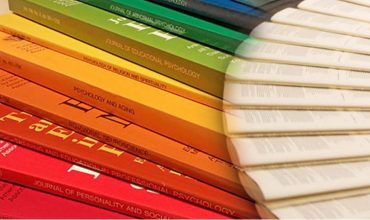Thomson Reuters Company is a multipurpose company, one of which is scientific activities. It releases a list of journals which identified as qualified journals worldwide, every year. The journals which are included in this list are called ISI journals.
ISI stands for “Institute for Scientific Information”
The other activity of Thomson Company was calculating the Impact Factor (IF) of ISI journals. IF is calculated by dividing “the number of papers referenced to the journal, during the last two years” into “the total number of journals published by the journal, during the last two years”. The higher IF, the more quality of a journal.
This report that is containing IF of journals is called JCR which stands for “Journal Citation Reports”.
Now, JCR is the property of Clarivate Analytics and is integrated with The web of science – which previously was a property of Thomson company –
What is considered a good impact factor?
There is not a definite range for IF; as it was said, the higher IF, the more quality of a journal.
In order to compare different journals in terms of IF, they should be of the same scope, for example, you cannot compare the IF of a medical journal with an engineering journal.
How to find the impact factor of a journal?
Most of the journals write their IF in their websites, however, it cannot be a reliable source to refer.
Clarivate website is the most reliable source. Visit this website and insert the full title of the journal, a word in the title, or an ISSN of it. A list will be appeared. If the journal you are searching for exists in the list, it is an ISI journal, otherwise, it is not. The problem is that the appeared list does not contain the IF of the journals.
There are also other websites publishing the IF list for journals. for example, you can see the IF list for 2017 in this PDF.
Considering the IF formula, JCR publishes the list of every year for the previous year. So in 2019, the list of 2018 will be published.
Criticism of impact factor
Remember the IF formula? It is the average of citations a journal has got during the past two years. Considering this fact, the IF is under some criticisms.
For example, naturally open access journals will get more citations, since the access to them is possible to every researcher easily.
Or in some fields the number of citations is more than others. So you cannot compare the IF of two journals in two different fields.
Besides, it causes editors to accept those papers that have more chance of getting citations.
What is the impact factor used for?
IF is using in two cases:
- When you are writing a research paper; if you want to write a high-quality paper, you need to use papers published in journals with higher IF to reference to.
- When you are going to publish your research paper in a journal, you can evaluate the quality of journals by their IF and choose which journal you are going to publish in.
What other metrics are there assessing the quality of a journal?
There are other metrics such as “Global Impact Factor” or GIF, “Universal Impact Factor” or UIF, “Scientific Journal Impact Factor” or SJIF, “Google Scholar metrics”, and so on which are calculated by publishers or other companies.
Note that the only reliable metrics to assess a journal in terms of academic value are JCR and SJR -which is calculated by Scopus and is of a range between Q1 to Q4- however, there are some criticisms of them as well.




